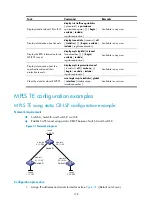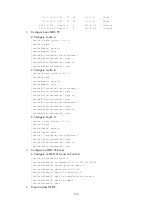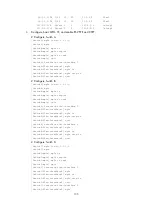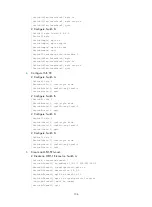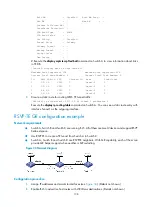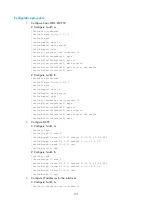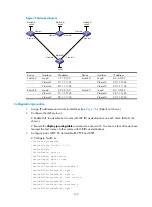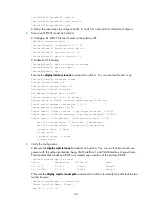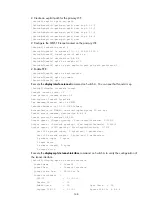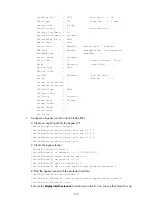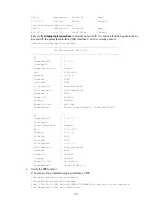
140
4.
Configure IS-IS TE. (Details not shown.)
5.
Configure the MPLS TE tunnel. (Details not shown.)
6.
Configure RSVP-TE GR:
# Configure Switch A.
<SwitchA> system-view
[SwitchA] mpls
[SwitchA-mpls] mpls rsvp-te graceful-restart
# Configure Switch B.
<SwitchB> system-view
[SwitchB] mpls
[SwitchB-mpls] mpls rsvp-te graceful-restart
# Configure Switch C.
<SwitchC> system-view
[SwitchC] mpls
[SwitchC-mpls] mpls rsvp-te graceful-restart
7.
Verify the configuration:
# After the configuration, a tunnel is created between Switch A and Switch C. Issuing the following
command, you will see that the neighbor’s GR status is Ready.
<SwitchA> display mpls rsvp-te peer
Interface Vlan-interface1
Neighbor Addr: 10.1.1.2
SrcInstance: 880 NbrSrcInstance: 5017
PSB Count: 0 RSB Count: 1
Hello Type Sent: REQ Neighbor Hello Extension: ENABLE
SRefresh Enable: NO
Graceful Restart State: Ready
Restart Time: 120 Sec Recovery Time: 300 Sec
MPLS RSVP-TE and BFD cooperation configuration example
Network requirements
•
Switch A and Switch B are connected directly. Enable MPLS RSVP-TE BFD on the VLAN interfaces
connecting the two switches, and run OSPF on the switches to ensure reachability at the network
layer.
•
If the link between Switch A and Switch B fails, BFD can detect the failure quickly and inform MPLS
RSVP-TE of the failure.
Figure 34
Network diagram
Switch A
Switch B
Loop0
1.1.1.1/32
Loop0
2.2.2.2/32
Vlan-int12
12.12.12.1/24
Vlan-int12
12.12.12.2/24



